Merry Christmas and a “Sawwaddi Pi Mai Khrap” to You
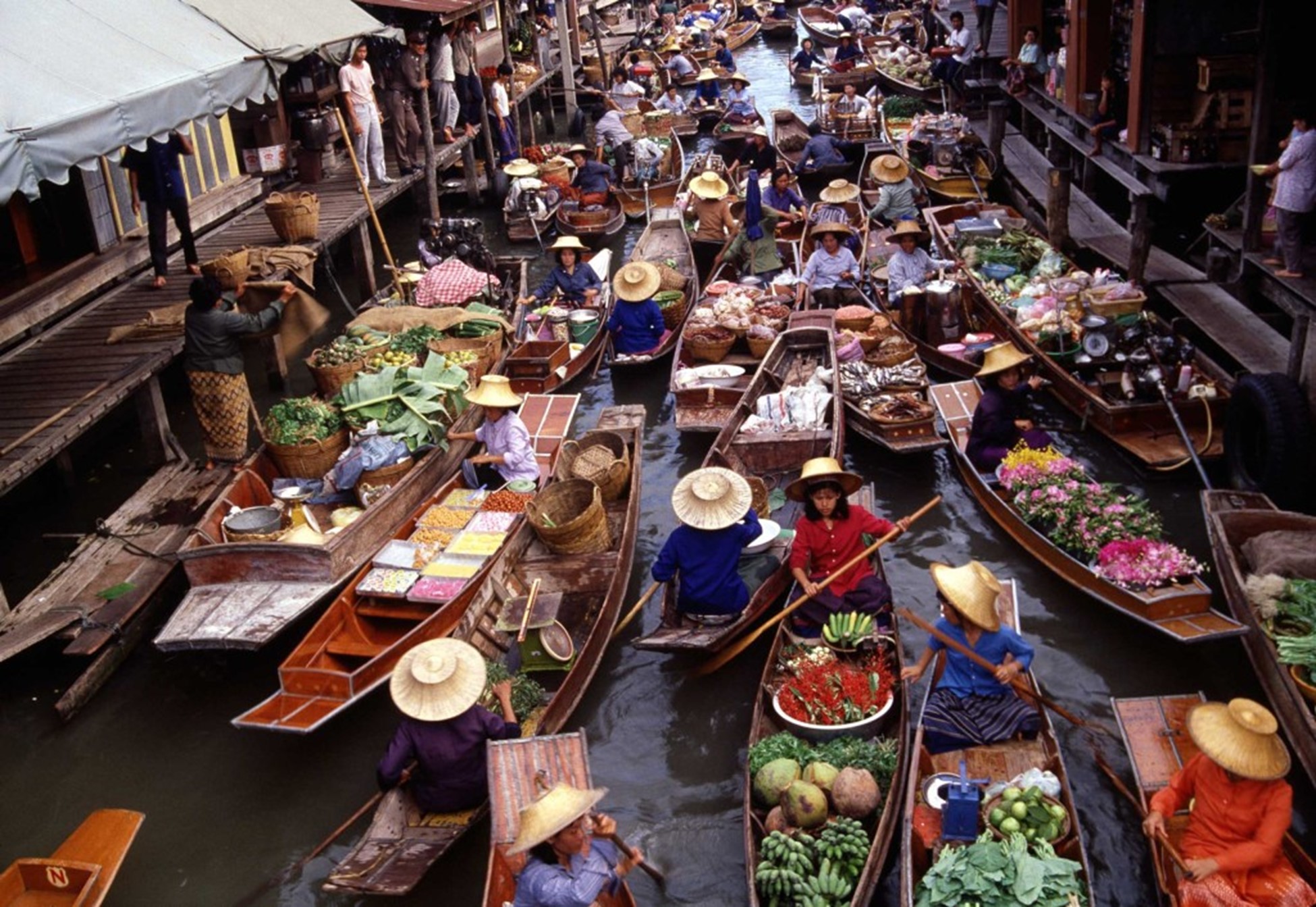
Alexandria, VA – Christmas creates visions of warmth: loved ones being picked up at the airport to euphoric receptions, frenzied shopping, sharing treasured stories of familial characters, smells coming from the kitchen that take us back decades, slammed parking lots, and racing to performances of The Nutcracker or A Christmas Carol. These are the visions that dance in our heads.
During the 1960s, these cherished moments were often carried overseas with us Americans to Thailand. Thousands of Americans stationed in “the land of smiles” during that time eagerly awaited the arrival of old Saint Nick to savor a small taste of life back in the states.
Living in Southeast Asia, a predominantly Buddhist region, one would think that the holiday season would be one without all the trimmings of back home. We thought that snow-covered hills, carolers, eggnog, and lights everywhere would have been shelved while in-country and that we foreigners, or “farangs” as we were known, would have to hold our celebrations with great caution, almost subterranean, so as not to offend our hosts.
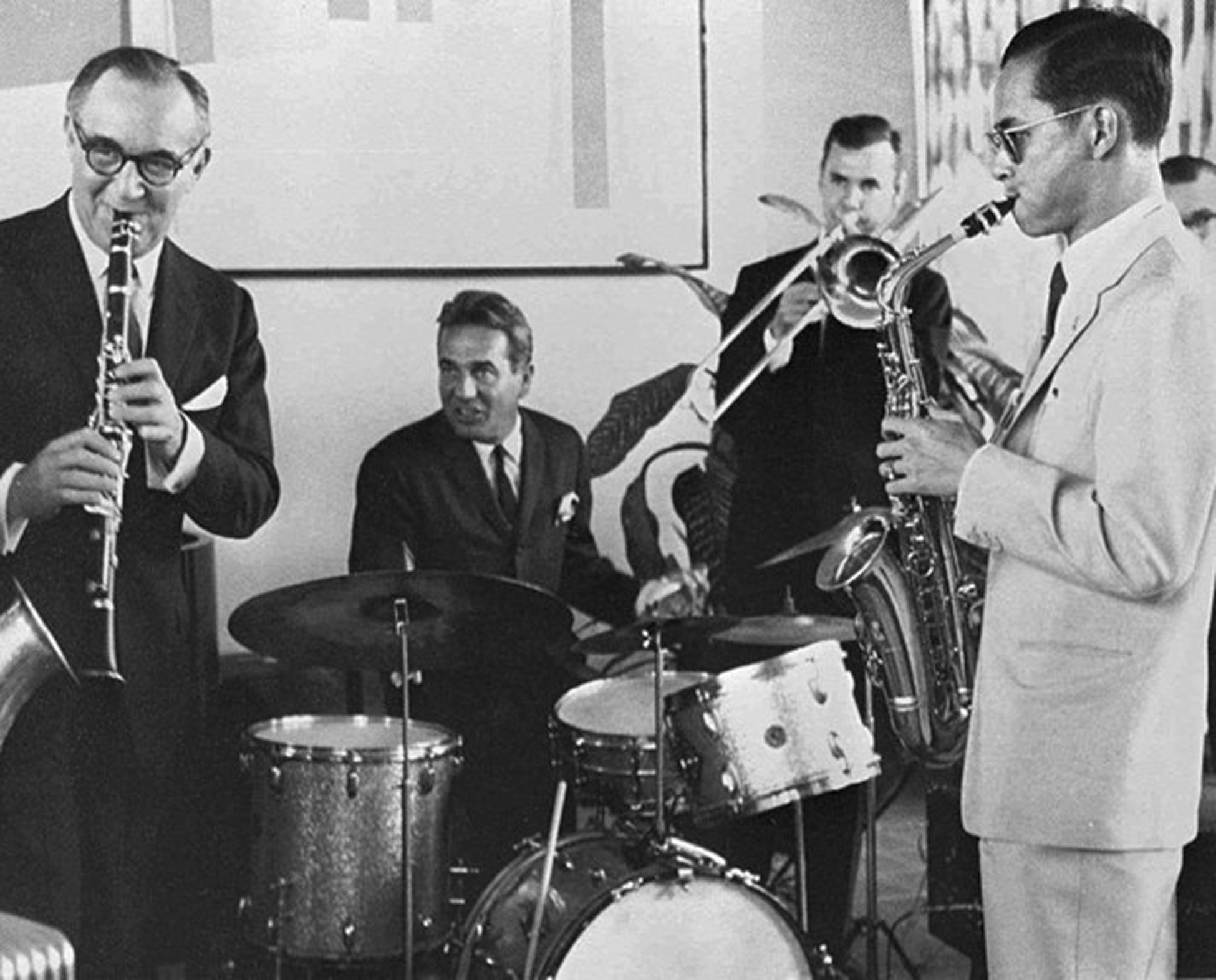
We also learned to adapt our image of the holiday season to include banana palms, shopping trips to chaotic markets on tarp-covered stalls or the famous floating market, and choral concerts at International School Bangkok with students from 32 different countries. The season took on a whole new look for us farangs, and it is something that remains to this day.
Thailand has three seasons: The hot season runs from February to June; the rainy season typically is between June and October; and the cool season is from October to February. (1) The rainy season, also known as the monsoon season, is deluged with rains that make a Mississippi River flood basin look amateur. There is no describing the “hot” season other than to say that summer combat in Iraq pales in comparison to Thailand’s because the heat is joined with humidity that boggles the mind. The fact that the “cool” season coincides with the western holiday season was a blessing we all savored.



The most wonderful thing is that Thailand has several key events that complement our western holiday season and make it seem a bit more like home, albeit with a distinctive Thai flavor.
Each year Thais celebrate Loi Krathong, which falls on the full moon of the 12th month in the Thai calendar. Although the date shifts depending on the lunar cycle, it tends to fall in November. The celebration is to honor and thank the goddess of water, Phra Mae Kongkha. It involves creating little “boats” made of sections of banana tree trunk, spider lily plants, or chunks of bread decorated with flowers, incense sticks, and candles. On the night of the full moon, all the candles and incense on the boats are lit and floated down rivers, canals, or streams and capped off with firework shows.
Another event that made us feel a little closer to home back in the states was the King’s Birthday, celebrated every December with lights literally everywhere. It seemed like all of Thailand was aglow with decorative displays across the country. To the Thais, it was a celebration showing reverence for their king. To us, it was like a taste of hometown with light displays of competing neighbors trying to outdo one another.
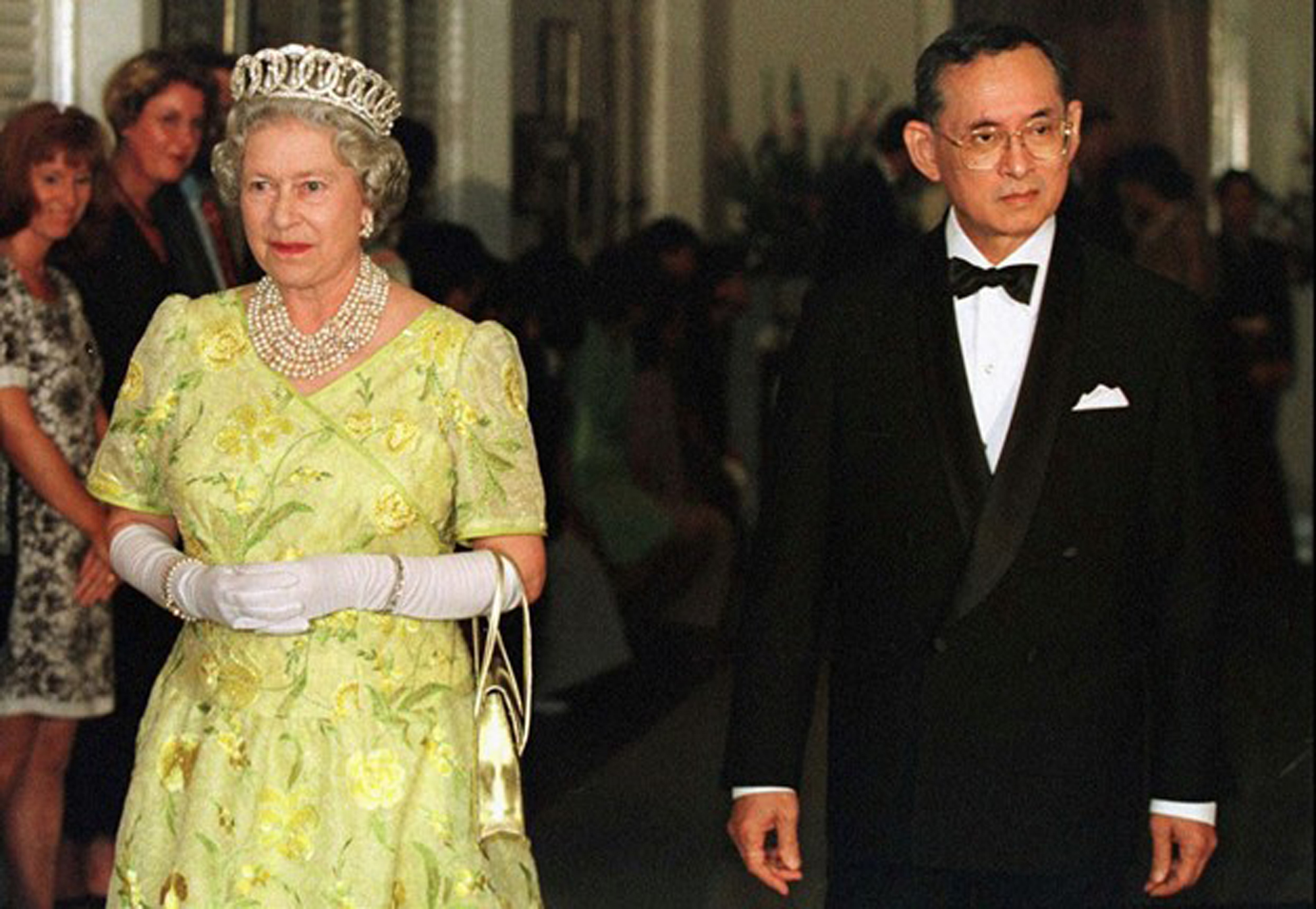
King Bhumibol Adulyadej (pronounced “Pomipon Adunadet”) was born on 5 December 1927 in Cambridge, Massachusetts, while his father was attending Harvard University. He was the middle of three children, the second son of Prince Mahidol of Songkhla, and the grandson of King Chulalongkorn, the young prince that many remember in the musical The King and I. He ascended the throne on 9 June 1946 after the death of his brother Ananda Mahidol and as the ninth monarch of the Chakri dynasty, he was crowned King Rama IX.
The Thai people revered King Bhumibol. His emphasis on the poor and underprivileged, especially on improving the working conditions of the agricultural provinces and people of the country, elevated him to a position of near-divinity. He was intimately involved in road and dam projects, hydroelectric plants, agricultural improvement programs, and public works projects throughout the provinces. New York Times correspondent Barbara Crossette once noted, “Thais came to see this Buddhist king as a father figure wholly dedicated to their welfare.”
Although the absolute monarchy was abolished in 1932 by a revolution, the royal family has always been held in high esteem. Despite the fact that the king has no real political control, constitutionally he is the Commander of the armed forces and a symbol of unity for the country.
King Bhumibol was a Renaissance man. He played and composed jazz music for saxophone and clarinet. He painted, loved photography, spoke four languages (French, German, and English in addition to his native Thai), and was an internationally ranked sailing competitor. On 16 December 1967, the king and his eldest daughter Ubolratana tied one another for first place in the Southeast Asian Games OK 18 dinghy heat. It was the first time in a global yachting competition that a father and daughter shared 1st place and the king’s first international medal.
His stature was so significant that despite several political coups and revolts, the king reluctantly intervened and resolved the crises, restoring order and prestige to the country.
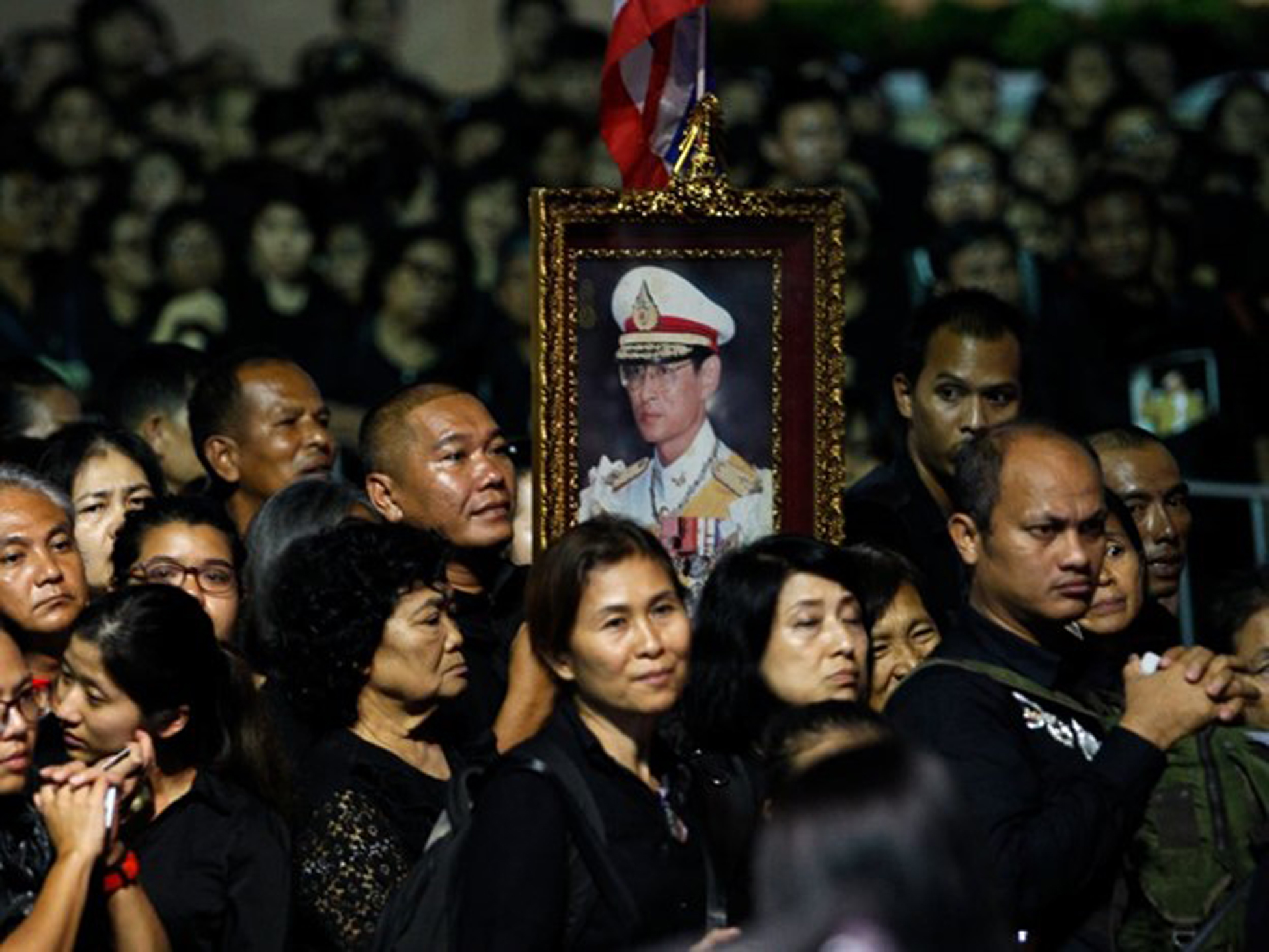
Sadly, on 13 October 2016, King Bhumibol died after a prolonged illness, ending the longest reign of any ruling monarch of 70 years and 120 days. The country went into mourning for a year, and he was cremated in a huge procession and ceremony 25-29 October 2017. Even the darkness of this tragic event and the deep emotional pangs it left didn’t dissipate the innate joy in the Thai people’s very DNA. (2)
I remember how beautiful Bangkok was in the winters of 1966 and 1967, with hundreds of thousands of lights glowing in the night air in honor of the king. All of us farangs enjoyed the display as if it were for the Advent season. We subconsciously wished that it was the Thai sign of respect for our holiday. And the Thais did recognize our holiday season in very subtle and beautiful ways.
On Christmas Eve, the postman that handled the neighborhood mail came by our house in the evening and presented my parents with a printed card emblazoned with beautiful calligraphy that said, “May the blessings of this season be with you always. Your most sincere and humble servant, your Postman.” Similar greeting cards were hand-delivered by a local policeman and a Tuk-Tuk driver who operated exclusively in our environs. Each note was received with ceremony by our father at the door. He responded with cartons of cigarettes or pints of Johnny Walker to the originators.
The holiday season culminated in January with a fireworks celebration for the Lunar New Year (3). The traditional greeting in Thai for the new year is “Sawwaddi Pi Mai Khrap” or “Sawwaddi Pi Mai Khaa” for women. Although the traditional Thai New Year, called Songkran, is celebrated in April, Thailand has also embraced the Western 1 January New Year. It has evolved into a great nationwide celebration.
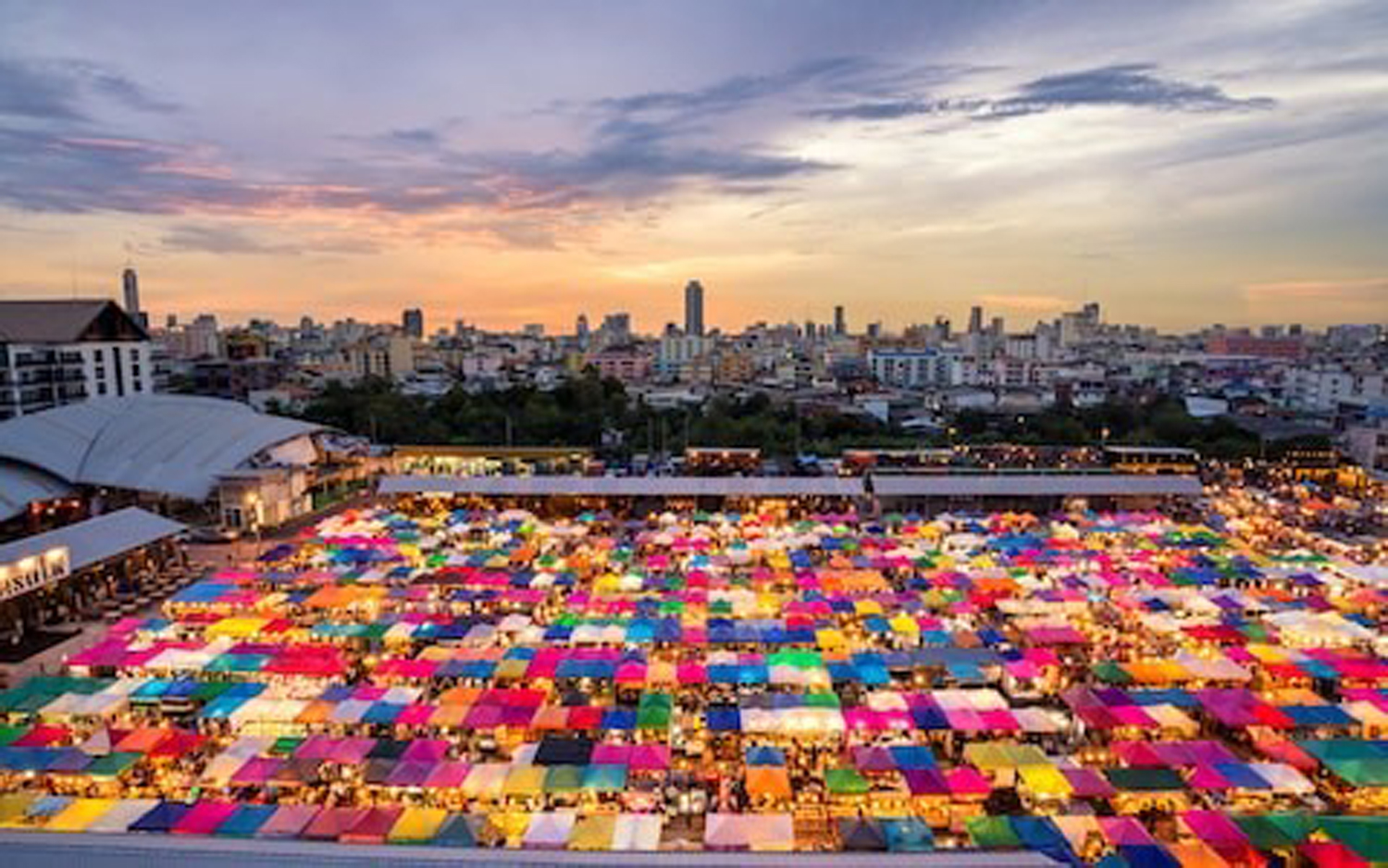
Decades later, the enthusiasm for a glittering and festive season has not dimmed. It has been nice to see that Thailand today enjoys an even more illuminated season and that cities and towns across the country have embraced the season as a boon to commerce. People are happy and now their joy is celebrated as an essential part of the culture.
I guess the more things are different, the more they seem the same country-to-country. But it is reassuring that the beauty we knew years ago remains today, and now with wild, widespread enthusiasm.
(1) “Cool” is relative. The coolest temperature in recent recorded history was 50 degrees Fahrenheit or 10 degrees Celsius in 1955. Usually the cool season temperature averages 80 degrees (27 degrees Celsius).
(2) A common humorous observation about the enthusiasm of the Thai people was that in the 1970s the departing Chinese Ping-Pong Team was nearly trampled at the airport by the incoming Thai Ping-Pong Team.
(3) Thailand also recognizes the traditional New year in Asia in April which is called Songkrahn or a water festival marking the end of the dry period and the beginning of the growing season.
ICYMI: Tips and Tricks on How to Start Traveling Again




